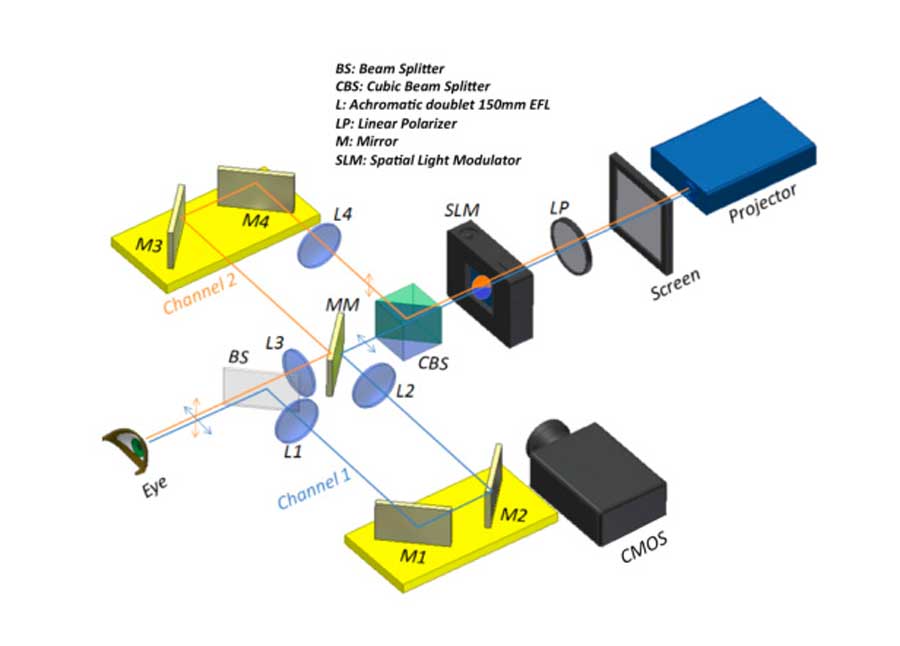Bifocal contact or intraocular lenses use the principle of simultaneous vision to correct for presbyopia. A modified two-channel simultaneous vision simulator provided with an amplitude transmission spatial light modulator was used to optically simulate 14 segmented bifocal patterns (+ 3 diopters addition) with different far/near pupillary distributions of equal energy. Five subjects with paralyzed accommodation evaluated image quality and subjective preference through the segmented bifocal corrections. There are strong and systematic perceptual differences across the patterns, subjects and observation distances: 48% of the conditions evaluated were significantly preferred or rejected. Optical simulations (in terms of through-focus Strehl ratio from Hartmann-Shack aberrometry) accurately predicted the pattern producing the highest perceived quality in 4 out of 5 patients, both for far and near vision. These perceptual differences found arise primarily from optical grounds, but have an important neural component.
Corrections
Carlos Dorronsoro, Aiswaryah Radhakrishnan, Pablo De Gracia, Lucie Sawides, and Susana Marcos, “Perceived image quality with simulated segmented bifocal corrections” Biomed. Opt. Express 7, 4620-4620 (2016): https://opg.optica.org/boe/abstract.cfm?uri=boe-7-11-4620.
17 October 2016: Corrections were made to the author affiliations. ©2016 Optical Society of America

